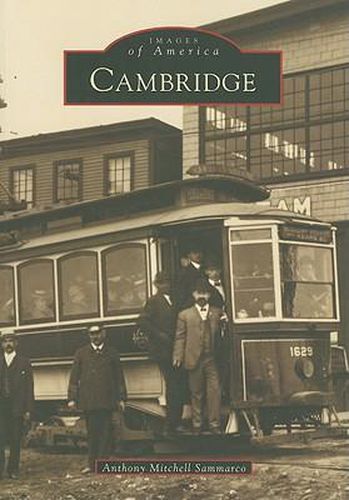Readings Newsletter
Become a Readings Member to make your shopping experience even easier.
Sign in or sign up for free!
You’re not far away from qualifying for FREE standard shipping within Australia
You’ve qualified for FREE standard shipping within Australia
The cart is loading…






Settled as New Towne in 1631, Cambridge was referred to by Wood, a seventeenth-century chronicler, as one of the neatest and best compacted towns in New England. The founding of Harvard College in 1636 was to ensure the town’s notoriety, as it was the first college in the New World. Harvard gave
Cambridge a cosmopolitan flavor, but the town retained its open farmland and its well-known fisheries along the Charles and Alewife Rivers for nearly two centuries. By the early nineteenth century Cambridge saw tremendous development, with industrial concerns in Cambridgeport. New residents swelled Cambridge’s population so much that it became a city in 1846. These changes, which included horse-drawn streetcars and, later, the Elevated Railway that is today known as the Red Line, made Cambridge a place of convenient residence. With the large-scale development in the late nineteenth century, Cambridge became a thriving nexus of cultural diversity.
$9.00 standard shipping within Australia
FREE standard shipping within Australia for orders over $100.00
Express & International shipping calculated at checkout
Stock availability can be subject to change without notice. We recommend calling the shop or contacting our online team to check availability of low stock items. Please see our Shopping Online page for more details.
Settled as New Towne in 1631, Cambridge was referred to by Wood, a seventeenth-century chronicler, as one of the neatest and best compacted towns in New England. The founding of Harvard College in 1636 was to ensure the town’s notoriety, as it was the first college in the New World. Harvard gave
Cambridge a cosmopolitan flavor, but the town retained its open farmland and its well-known fisheries along the Charles and Alewife Rivers for nearly two centuries. By the early nineteenth century Cambridge saw tremendous development, with industrial concerns in Cambridgeport. New residents swelled Cambridge’s population so much that it became a city in 1846. These changes, which included horse-drawn streetcars and, later, the Elevated Railway that is today known as the Red Line, made Cambridge a place of convenient residence. With the large-scale development in the late nineteenth century, Cambridge became a thriving nexus of cultural diversity.